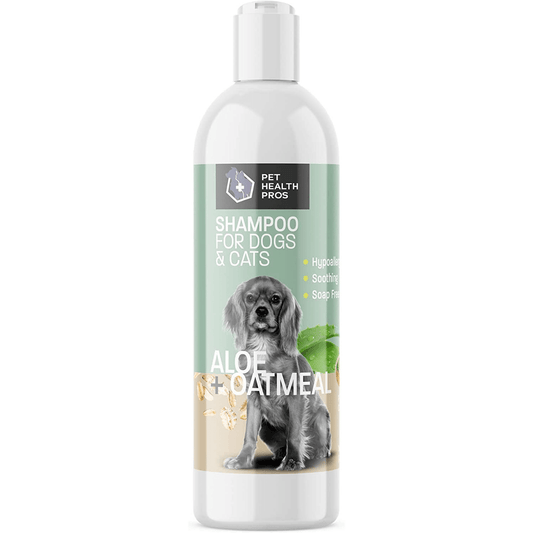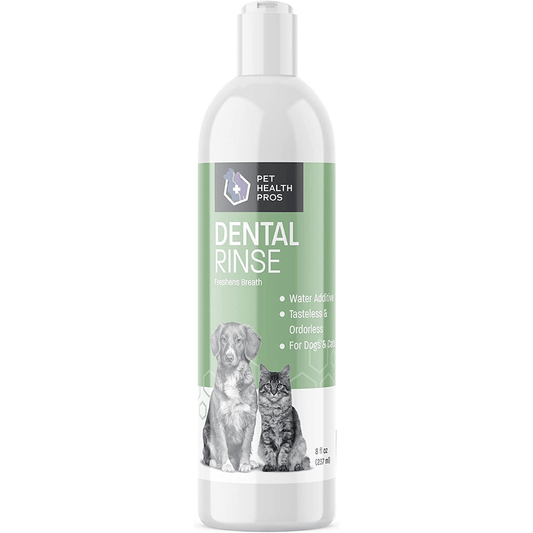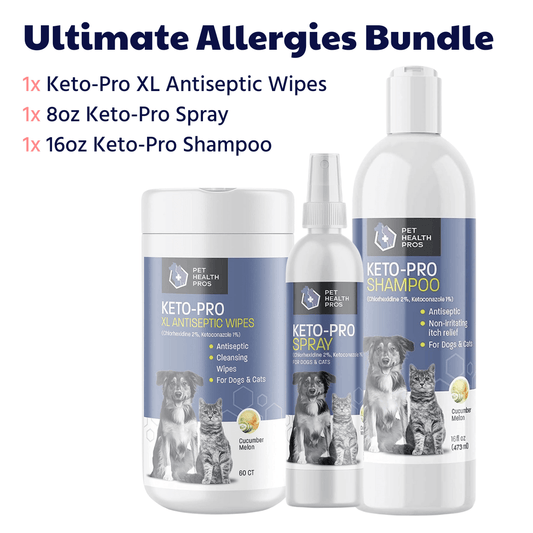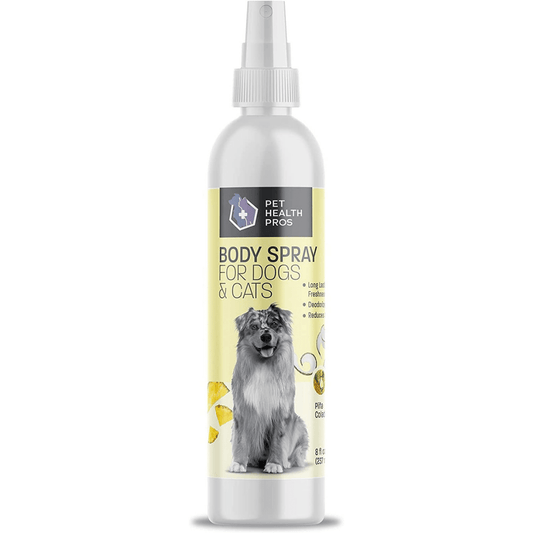The paws are more than just cute; they're essential and sensitive. Join Pet Health Pros in exploring the yeast problems in paws and our medicated solutions.
To understand yeast infections in dog paws, dive into the introduction. Get an overview of these common infections that can cause itchiness and discomfort in our furry friends.
Overview of yeast infections in dogs
Yeast infections in dogs are familiar. They cause irritation and discomfort. These infections are caused when there's an imbalance of yeast in a dog's body. This leads to too much fungus.
Signs of yeast infections can differ. But, they include itching, redness and a bad smell. Dogs with weak immune systems or allergies are more vulnerable. A vet usually looks at the area and may take skin scrapings to diagnose.
Treating yeast infections needs medication and changes in lifestyle. Creams, shampoos and oral meds help get rid of the fungus. Keeping the area clean and dry can stop more growth.
It is important to treat any issues that lead to yeast infections. Allergies or immune system problems should be taken care of. A balanced diet and exercise also help.
By following these recommendations, pet owners can manage and stop yeast infections. Knowing the causes, symptoms and treatments helps us give our furry friends what they need. With the right care, our dogs can live without itching.
Understanding Yeast Infections
To understand yeast infections in dogs, delve into the sub-sections: What is yeast? Common causes of yeast infections in dogs, and Symptoms of yeast infections in dog paws. Explore the solutions briefly without introductory sentences and discuss the keywords: yeast, infection, dogs, fungus, antifungal, ears, paws, itchy.
What is yeast?
Yeast - a type of fungus - is an incredible, microscopic organism. It's found in nature and has been used for centuries in baking and brewing. Yeast is also present in our bodies, aiding digestion.
It can convert sugar into carbon dioxide and alcohol through fermentation. This process gives bread its fluffy texture and beer its intoxicating properties. But yeast is in more than culinary products, like antibiotics, vitamins, and probiotics.
However, yeast can cause infections in certain parts of the body. This is called a yeast infection or candidiasis. It happens when there's an overgrowth in areas like the mouth, vagina, or skin folds.
We can prevent or alleviate yeast infections with a few tips. Firstly, maintain proper hygiene. Keep the affected area clean and dry. Secondly, avoid tight-fitting clothes made from synthetic materials.
Also, incorporate probiotics into your diet to restore the balance of good bacteria and minimize fungal overgrowth. Probiotics are in yogurt, kefir, sauerkraut, and other fermented foods. Lastly, reduce sugar intake to starve the yeast.
By understanding yeast infections and using these strategies, we can maintain optimal health - and enjoy the wonderful properties of yeast! Let's embrace the complex nature of this microscopic wonder!
Common causes of yeast infections in dogs
Yeast infections in dogs can be caused by many factors. Firstly, a weak immune system increases a pup's susceptibility to yeast. Secondly, allergies to food or environment can hold up the process. Lastly, too much moisture in ears or skin folds can create the perfect place for yeast to breed.
Certain breeds are more prone to yeast issues than others. Dog with long ears, like Cocker Spaniels or Basset Hounds, can get an ear infection due to the warm and wet environment inside their ear canal. Hence, it's important to clean their ears and take proper care of skin folds.
Symptoms of yeast infections in dog paws
Signs of yeast infections in dog paws can differ. For example, your pup may lick or chew their paws a lot, which can cause redness and soreness. You may smell a bad odor from their paws, and there may be flaky skin. Symptoms can vary in intensity.
To avoid yeast infections, you should routinely clean and dry your pup's paws after outdoor activities. Special paw wipes or anti-fungal sprays can help. Additionally, keep their nails trimmed and make sure they have proper ventilation.
If you think your dog has a yeast infection in their paws, talk to a vet. They may recommend antifungal medications, such as tablets or creams, or dietary changes to boost your pup's immune system and reduce inflammation.
Treating Yeast Infections
To effectively treat yeast infections in dog paws, explore antifungal treatments and home remedies. Antifungal treatments offer a specialized solution, while home remedies provide alternative options. By understanding the benefits of each approach, you can address the itchy reality of yeast infections in your furry friend's paws.
Antifungal treatments for yeast infections in dog paws
Combating yeast infections in dog paws requires antifungal treatments. Here are five essential points:
- Diagnose the infection. Look for persistent itching, redness, swelling, or an odor.
- Get a vet to prescribe antifungal medications.
- Apply topical ointments or creams.
- Clean & dry paws after walks.
- Feed probiotics & Omega-3 fatty acids.
Every dog is unique, so consult a vet for personalized advice. Take action promptly if you suspect a yeast infection in your dog's paws; early intervention leads to faster recovery & prevents complications. Seek professional advice to ensure your canine companion leads a healthy & happy life.
Home remedies for yeast infections in dog paws
Yeast infections in dog paws can be managed using home remedies. These treatments help to reduce discomfort and promote healing. Here are some successful home remedies for yeast infections in dog paws:
- Apple Cider Vinegar: Make a mixture of one part apple cider vinegar and two parts water. Then, soak your dog's paws in it. This helps the skin's pH balance to return to normal, making it hard for yeast to grow.
- Coconut Oil: Apply coconut oil directly to the affected areas. This relieves itching and moisturizes the skin. Coconut oil also has antifungal properties that fight yeast infections.
- Yogurt: Feed your dog a small amount of plain, unsweetened yogurt. This boosts their immune system and encourages good bacteria growth. This helps to fight off yeast overgrowth.
- Colloidal Silver: Rub colloidal silver topically onto the affected areas. This kills yeast and reduces inflammation. It has antimicrobial properties that work against a variety of infections.
Don't forget to ask your vet for advice and prescribed treatments. Also, do regular paw cleaning and keep them dry. This helps to prevent future yeast infections.
Using home remedies for yeast infections in dog paws is a good way to address the issue without just relying on medication. Apple cider vinegar restores pH balance, while coconut oil moisturizes and stops fungi. Yogurt increases immunity and colloidal silver is an antimicrobial agent. By adding these to your pup's care routine, you can give them relief from their paw yeast infection and lessen the chance of it happening again.
Preventing Yeast Infections
To prevent yeast infections in dogs, address them firsthand with a regular paw care routine, focus on dietary and nutritional considerations, and be mindful of environmental factors. By implementing these solutions, you can effectively combat the itchy reality of yeast in dog paws.
Regular paw care routine
Paw care is a must for warding off yeast infections. Here's the how-to:
- Check your pet's paws daily for redness, swelling, or other irritation.
- Trim their nails with pet-specific clippers.
- Wash their paws with a gentle pet cleanser, avoiding harsh soaps.
- Dry off their paws to discourage bacteria and yeast growth.
- Apply a paw balm or moisturizer made with natural ingredients.
Plus, avoid hot pavement or rough surfaces, give them regular exercise on softer terrain, and speak to a vet for tailored advice.
By following this paw care routine, you can keep your furry friend healthy and safe from yeast infections. Start today!
Diet and nutrition for preventing yeast infections
For optimal health and to avoid pesky yeast infections, diet and nutrition are key. Here are some tips to consider:
- Include Probiotics. Yogurt and other fermented foods, like kimchi and sauerkraut, have 'good' bacteria that balance our bodies.
- Reduce sugar intake. Yeast loves sugar, so limit candy, soda, and even high-sugar fruits.
- Garlic has antifungal properties. Add it to your meals or take supplements - check with a doctor first.
- Stay hydrated. Water helps flush out toxins and balances the vaginal flora.
- Choose whole foods. Reach for quinoa, brown rice, and oats, rather than white bread and pasta.
- Moderate alcohol consumption. Alcohol can disrupt the balance of bacteria in our bodies.
Also, wear loose fitting, natural fabrics - like cotton - to minimize excess moisture.
Making mindful choices can significantly reduce the risk of yeast infections. So, prioritize probiotics, curb sugar intake, use garlic, stay hydrated, opt for whole foods, and drink moderately. Start incorporating these diet and nutrition tips today - and enjoy a healthier lifestyle!
Environmental factors to consider
Environmental factors can help stop yeast infections. Conditions can make it easy for yeast to grow, so be cautious. Humidity is a key factor. Moisture helps yeast grow, so keep the genital area dry. Wear loose, breathable fabrics instead of tight or synthetic clothing. Temperature also matters. Yeast grows in warm places, so avoid hot tubs, saunas, and too much sunlight. Good hygiene practices are important too. Wash with mild soap and water to keep bacteria balanced. Some products can make the vagina more prone to yeast infections. Use gentle, natural products instead. Safe sex is important too. Condoms prevent STIs and irritants that can cause yeast infections. By being aware of these factors and having healthy habits, yeast infections can be prevented. Take control and stay comfortable - take action now!
Other Areas Affected by Yeast Infections
To address other areas affected by yeast infections, such as dog ears and various parts of the body, we'll explore their unique solutions. Understanding how yeast infections manifest in different areas is crucial to effectively tackle them. Let's delve into yeast infections in dog ears and yeast infections on other parts of the body.
Yeast infections in dog ears
Yeast infections in dog ears are often caused by Candida fungus overgrowth. Dogs with floppy ears or long hair are more susceptible. Symptoms include itching, redness, swelling, and an odor. Vets diagnose yeast infections by examining a sample under a microscope. Treatment usually involves cleaning and medicated drops or ointments.
It's worth mentioning that each case can differ. To prevent yeast infections in dog ears, regular ear cleaning and keeping the ears dry is important. Also, addressing any underlying issues like allergies or hormonal imbalances can help.
Understanding yeast infections in dog ears can help owners protect their pet's health. By staying informed and seeking timely veterinary care, our four-legged companions can live happy and infection-free lives.
Yeast infections on other parts of the body
Yeast infections can be irritating and affect all sorts of areas. Here are some key points to remember:
- Oral Thrush: This infection can occur in the mouth. It usually looks like white patches on the tongue or inner cheeks.
- Skin Folds: Moist and warm areas, like skin folds between fingers and toes, can also get a yeast infection.
- Nail Infections: Yeast can cause onychomycosis, which makes nails look thick, discolored, or brittle.
- Vaginal Yeast Infections: Most people associate yeast infections with vaginas, but they can also affect other parts of the female genital region, like the vulva.
It's worth noting that anyone can get yeast infections, regardless of age or health.
Conclusion
Tread confidently with knowledge and Pet Health Pros' medicated care, ensuring your dog walks with comfort and joy.
To conclude, ensure the well-being of your furry friend by promptly addressing yeast infections in their paws. Detecting and treating these infections early on is vital. Additionally, we provide final tips to effectively manage yeast infections in your dog's paws, ensuring their comfort and overall health.
Importance of early detection and treatment
Early detection & treatment are essential for optimal health. If an issue is spotted early, it can be managed before more serious complications arise. Regular check-ups & screenings can help detect diseases when they are more treatable. Taking swift action can stop the progression of the condition & result in a better outcome.
Early detection also allows healthcare professionals to create customized treatment plans based on individual needs. Prompt diagnosis lets them use appropriate interventions such as medication, therapy or lifestyle changes. This focused approach increases the chance of successful outcomes & a full recovery.
Recognizing symptoms or warning signs quickly enables people to seek medical help sooner. This prevents health emergencies that require intensive medical care or hospitalization. Timely treatment saves lives & reduces the financial strain of prolonged healthcare.
A great example of the importance of early detection & treatment is Jane Doe. She was active but ignored her persistent fatigue until her blood work showed low hemoglobin. Further tests led to an early diagnosis of iron deficiency anemia. With supplementation & dietary adjustments, Jane got her energy back & avoided further complications.
Final tips for managing yeast infections in dog paws.
To manage yeast infections in dog paws, thoughtful action is needed. Here are some tips to help:
- Clean and dry the paws regularly. Use a gentle cleanser and dry them well.
- Keep the paws trimmed to reduce moisture buildup, which can cause yeast.
- Give a balanced diet with high-quality ingredients to support your dog's health.
- Avoid damp or wooded areas where yeast could be present. Choose walking routes accordingly.
- Check the paws for redness, swelling, or excessive licking. These may show an infection.
Consult your veterinarian for diagnosis and treatment. They can give advice for your dog.
Prevention is the main thing when it comes to yeast infections in dog paws. By following these strategies and looking after your pup's paws, yeast infections can be reduced.
Extra Tip: If your dog keeps getting yeast infections even though you have taken preventative steps, talk to your vet about allergies. Allergies can be a cause of chronic yeast infections and need special management.
Frequently Asked Questions
FAQ:
1. What causes yeast infections in dog paws and ears?
Yeast infections in dog paws and ears are commonly caused by an overgrowth of the fungus called yeast. This overgrowth can be triggered by various factors such as allergies, poor immune system, underlying health conditions, or excessive moisture in those areas.
2. How can I identify a yeast infection in my dog's paws?
Yeast infections in dog paws often manifest as itchy, red, and inflamed skin. You may notice your dog constantly licking or chewing their paws, which could lead to hair loss, sores, or foul odor. If you observe these symptoms, it is recommended to consult a veterinarian for a proper diagnosis.
3. Can yeast infections in dog paws be treated at home?
Mild yeast infections in dog paws can sometimes be managed at home. Regular cleaning of the paws with a gentle antifungal solution and keeping them dry is essential. However, it is crucial to seek veterinary advice to determine the underlying cause and receive appropriate antifungal medication if necessary.
4. Are there any natural remedies for yeast infections in dog paws?
While there are natural remedies suggested by some pet owners, it is important to note that not all of them are scientifically proven or safe. It is advisable to consult with a veterinarian before using any natural remedies to ensure the well-being of your dog.
5. Can a yeast infection in dog paws spread to other pets or humans?
Yeast infections in dog paws are generally not contagious to humans or other pets; however, it is still recommended to practice good hygiene and take precautions while handling infected areas to prevent any potential transmission or secondary infections.
6. How can I prevent yeast infections in my dog's paws and ears?
To prevent yeast infections in dog paws and ears, it is important to keep these areas clean and dry. Regularly inspect and clean your dog's paws, especially after outdoor activities or water exposure. Additionally, a balanced diet, regular grooming, and maintaining overall good health can contribute to reducing the risk of yeast infections.








